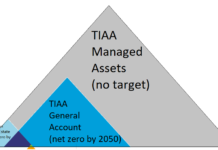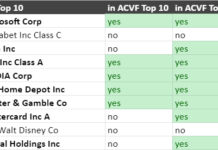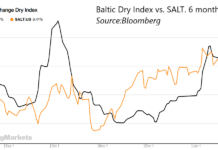Tom Konrad CFA

Storm Sailor (Photo credit: Abaconda) |
Sailing into a Storm
Despite the unresolved European debt crisis and America’s fiscal cliff, stock markets remain buoyant. With politicians bickering, that is mostly due to aggressive action from central banks. Yet despite the Federal Reserve’s third (and largest) round of quantitative easing (QE3) and the European Central Bank‘s unlimited bond buying program, politicians still have the capacity to throw a monkey wrench in the world economy. Worse, doing nothing is all they have to do to mess things up. Doing nothing is what politicians do best.
An even worse prospect would be short term fiscal tightening in the name of reducing budget deficits, something which Mitt Romney says would be high on his administration’s priority list if he were to be elected. While the US Government spends far too much compared to its revenues, correcting this imbalance should not be tackled abruptly or we risk sudden economic contraction which will make the debt even harder to pay off in the long term.
How to Invest
It’s a market truism that it does not pay to “Fight the Fed.” That is, when the Federal Reserve is pumping out the monetary stimulus, the market tends to go up, despite risks elsewhere in the economy. This implies that the place for investors to be is in the stock market: the most likely direction of the market is up. Yet there remains a significant risk that one or more of the uncertainties which currently worry investors will blossom into a full-scale panic. If that happens, selling will beget more selling, and falling stock prices will cut investment, consumer spending (via the wealth effect), and tax receipts. Such a market panic may be less likely than a slow cruise to new market heights on QE3, but the market ship may be more Titanic than Queen Elizabeth.
Cautious investors will prepare for any such disaster by investing in life boats big enough for their whole portfolios, but not so expensive that they would be better off just staying on the dry land of cash and money market funds.
The remainder of this article is a step-by-step guide to building those lifeboats in the simplest way possible: using puts on a broad market ETF. Unfortunately, there is a limit to how simple I could make it, and I had to assume that readers have a basic familiarity with what puts and calls are, how they work, and the risks involved in using them. If you do not already have this knowledge, I suggest you read one of the many Options Primers available in print or online.
Beta Hedging

The Ballad of Beta-2 (Photo credit: Wikipedia) |
One of my most enduring articles has been Five Hedging Strategies for Stock Pickers, written over three years ago but still producing feedback from readers today. While that article touched on a number of ways to hedge (short positions, short calls, short and ultrashort ETFs, and puts), the focus was on constructing a long-short, market neutral portfolio. That strategy is not the best one when the market is likely to go up, since it removes the chance of gain from a rising stock market.
Today’s market will probably continue upward as central banks on both sides of the Atlantic continue to pump out monetary stimulus, but it contains significant risks of an abrupt and large market decline. In this context, hedging with put options is a more appropriate response. The technique detailed in “Five Hedging Strategies” article focuses on reducing portfolio beta to zero. Beta is a measure of how much a portfolio follows market moves; a beta of zero implies that portfolio moves and market moves are completely uncorrelated. Beta hedging works well when the hedging tools are short positions or in-the-money options, but fails with out-of-the-money options (including put options). If followed blindly, beta hedging would lead to overspending on too big a life boat.
This is how to figure out just how many puts you need.
Step 1: Get Options Permission
If you use an online brokerage, you generally have to apply for permission to trade options. There are various levels of option permission, but since buying options such as puts limits your risk to the price of the option, getting permission to buy puts is usually fairly simple. Nevertheless, it may take a week or two for your broker to process your application, so you should do this as soon as you start considering a option based hedging strategy. There is generally no cost to apply for options permission, even if you later decide this strategy is not for you.
Step 2: Select a Market Index ETF
It’s possible to hedge a portfolio by buying puts on each of the stocks in that portfolio, but the strategy has several drawbacks. First, not all of the securities in your portfolio will have options available (options are usually only available for widely held securities.) Even if options are available, they may be too illiquid to purchase in the quantity needed.
Instead, you should choose an index ETF that is a good match for the stocks in your portfolio. For instance, if you have mostly large-cap U.S. stocks, a good choice might be the S&P 500 SPDR (NYSE:SPY). A “Dogs of the Dow” portfolio would use the Dow Jones Industrial Average SPDR (NYSE:DIA), while a portfolio focused on solar and wind stocks might use the Powershares Wilderhill Clean Energy ETF (NYSE:PBW.)
If you have an international portfolio, you might consider the Vanguard International Equity Index FTSE All World Ex U.S. ETF (NYSE:VEU).
Although you might want to use the iShares MSCI World (NYSE:URTH) because it also contains U.S. equities, this is not possible, since options on URTH are not available.
In addition to having options available, you should makes sure that the options on your chosen index are fairly liquid, and that some long-term options (called LEAPS or Long-Term Equity Anticipation Securities) are available and liquid. You will want to see active trading in the puts you plan to buy, otherwise you are likely to end up paying over the odds (or have to wait a long time for a limit order to execute, if executes at all) for your protection. For this reason, it’s often best to settle for an index ETF which is an imperfect match for your portfolio in order to be able to trade liquid options.
I use a combination of SPY and the iShares Russell 2000 Index (IWM), which tracks small capitalization stocks, to hedge my portfolio, but using multiple ETFs adds a degree of complication which is beyond the scope of this article.
Step 3: Portfolio Statistics
A proper hedge requires understanding how much your portfolio will be expected to move when the market index moves. This will allow you to determine how large your hedge needs to be. For example, if your portfolio is fairly stable, and is expected only go down around 40% when the index you are using goes down 50%, you’ll need a one-fifth (1/5 = (50%-40%)/50%) smaller hedge than you would need if your portfolio moved in tandem with the index.
Using a spreadsheet, you don’t need to understand statistics to do the necessary calculations. I’ve put one together for you here: ODF format/ XLS format.
Using the spreadsheet
While the spreadsheet can calculate the number of puts you’ll need to hedge you portfolio, you will need to gather a fair amount of data for it to work. The sheet works by calculating how much your portfolio and chosen ETF move together, and uses that measure to calculate how many puts will be needed for a 100% hedge of the portfolio against market movements.
To do this, you will need to monitor the value of your portfolio and the ETF on a daily basis and input the values into the green columns on the sheet. Don’t worry if you miss a day here and there; this should not throw off the calculations significantly.
Start by deleting the data I’ve entered into the first 5 columns of the sheet, which are for an example portfolio consisting of 1000 shares of General Electric (NYSE:GE).
Each day, start a new row with the date in the first column (A), enter value of your portfolio in column B, and the value of your chosen ETF in column D. If you have transferred money into or out of your account since the last entry, enter the amount in column C, using a positive number for money added to the account, or a negative number for money withdrawn. If your chosen ETF pays a dividend, enter the amount to be paid per share on the ETF’s ex-divided date in column E.
Leave column C blank if you have not transferred money into or out of your account. Leave column E blank on all but the 4 days a year that the ETF does not go ex-dividend. If more than one trading day has passed since your last entry, sum all the transfers you’ve made in the interim when entering column C, and enter the per-share dividend in column E if the ETF went ex-dividend in the interim. Technically, column C should also account for the lag between stocks going ex-dividend and the dividend payment, but this should not significantly effect the calculations unless the dividend in question is a significant part of the change in your portfolio value on any given day. If you do wish to account for this, enter the value of the dividend payment with a negative sign on the date a stock goes ex-dividend, and add the number back in when the dividend is received.
After you have entered 30 trading days worth of data, the spreadsheet will begin to show estimates of the number of puts on your chosen ETF you will need to fully hedge your portfolio against large moves of the ETF. To continue entering data beyond the last row I filled in my example, copy columns F through O from the previous row each time you add a new row.
 The example portfolio of 1000 shares of GE would need to be hedged with approximately 1.6 puts, which is the result of the aggregate calculation shown in column O. There is also a chart on the second sheet of the calculator which displays this calculation graphically in green (example to the left).
The example portfolio of 1000 shares of GE would need to be hedged with approximately 1.6 puts, which is the result of the aggregate calculation shown in column O. There is also a chart on the second sheet of the calculator which displays this calculation graphically in green (example to the left).
Since you can’t buy fractional put contracts, you will need to decide if you want to use 1 or 2 put contracts. A single SPY put will not provide full protection for this example portfolio, but it will get you more than half the way there, and cost a little more than half as much (after commission) than full protection with 2 puts.
Step 4: Choose an Expiration Date or Dates
Generally, you will want to protect yourself with long term puts, since short term puts, while less expensive, have to be renewed more frequently. Generally, the longest term puts available have a duration of approximately two years. For my example SPY, the longest dated puts currently available expire on the 19th of December, 2014.
Step 5: Choose a strike price
With puts, you need to choose a level below which you want to protect your portfolio. If you want to protect yourself against small moves, you will have to pay more for protection, so it generally only makes sense to buy protection against large drops in the index.
Using my example of SPY, the ETF is trading around $141 as I write. To protect against a 10% drop, the appropriate strike would be $125 (this is actually a 11.5% drop, but strike prices are only available in $5 increments.) The ask for SPY Dec 19 2014 $125 puts was $12.99, or $1,299 per contract. So for a little over two years of full protection (2 contracts) against a greater than 11.5% drop, you would have to pay about 24% of your portfolio, or about 11% per year, which would likely eat up any gains you hope to make.
Hence, you’ll generally want to protect yourself only against much larger drops of over 20% or more. Protection against drops of over 22% can be had at a strike price of $110, where the ask for December 19, 2014 $110 puts is $8.45, or $845 per contract. Partial protection for the portfolio (1 put) can be had for $845 for 25 months, making the average cost of protection a little less than 2% per year. This is still expensive, but no more than a small investor might pay for advice from an investment advisor combined with the management fees of the mutual funds that advisor would likely recomm
end. And, in my experience, few investment advisors know how to provide downside protection for their clients’ portfolios.
In a year like 2008, when SPY fell 37%, a single put contract like the December 19, 2014 $110 put discussed above would have paid out approximately $2,200 against probable losses in the portfolio of $8,030. My $21, 700 example portfolio would have fallen to $15,871 rather than $13,671. Perhaps more importantly, you would have had cash to invest in early 2009, when the best investment opportunities since 2001 were available. Two put contracts would have prevented more than half of the losses, but maintaining a hedge like that would cost $1700, or almost 4% of the portfolio’s value per year.
Step 6: Purchase the Puts
Through your broker, enter an option order to buy the number of the specific puts you selected. I recommend using limit orders, since even the most liquid option orders have wide bid-ask spreads, and I generally place my limit well below the ask and wait for the market to come to me. If you place your limit at the midpoint of the bid and the ask, you will often find that your order is executed almost immediately, so even if you are worried that the market will move against you, it’s worth giving this a try.
Caveats
At best, the spreadsheet calculator I’ve provided is an approximation. Even the most sophisticated calculations often fail to reflect future market behavior during a crisis, when historical relationships frequently break down. In particular, just because your portfolio has been moving in a particular way with SPY before a market crisis, does not mean it continue to do so. You may end up needing more or (with luck) less protection than expected.
There are also a number of systematic flaws in the methodology, which you may need to correct for.
If your portfolio contains illiquid securities that don’t trade very often, the calculator will most likely understate the number of puts you will need to use. In this case, you are likely to notice that the columns that are based on 3-day and 5-day changes (K and N) will generally be higher than column H (1-day changes.) If that is the case, you will probably need more puts than shown in column O.
If your portfolio already contains options such as calls and puts which have non-linear return characteristics, the calculations will also be thrown off. Long puts or short call positions will usually cause the amount of protection needed to be overestimated (i.e. you’ll need less protection than the spreadsheet predicts) while short put and long call positions will lead to underestimates of the amount of protection needed. These effects will be greater for in-the-money calls and out-of-the-money puts.
Conclusion
Without a doubt, hedging your portfolio with puts can be an expensive proposition. It works best when your portfolio already has fairly low volatility, and produces a decent income (perhaps from dividends or selling covered calls) to pay for the ongoing cost of protection. If you are a passive index investor, protecting yourself with puts is probably not worth the expense over the long term; you would probably be better off keeping your money out of the stock market.

Tyne Lifeboat. Second ever lifeboat in existence. (Photo credit: Wikipedia) |
On the other hand, investors who feel that they have some sort of investment edge such as superior stock picking ability might consider protecting themselves with puts in order to reduce their overall market risk. If puts seem too expensive, they might want to consider one of the four other hedging strategies I outlined in my 2009 article, or consider using short call spreads. Such strategies tend to have lower ongoing costs (some even produce income), but they either provide less protection in the case of large market declines, or they potentially produce large losses when the market rises.
Just yesterday, Marc Faber told CNBC that he “would not be surprised” if the S&P 500 and Dow Jones Industrial Average plummeted 20% from their recent highs. I would not be surprised either. Nor would I be surprised by a decline of 30-40% if the recent bad earnings numbers are aggravated by renewed problems in Europe and/or a failure in the US to deal with the looming fiscal cliff.
I also won’t be surprised if the ominous storm clouds on the horizon produce no more than a sprinkle. But just in case, I’ve bought a lifeboat.
Disclosure: Long Puts on SPY, IWM, QQQ
This article was first published on the author’s Forbes.com blog, Green Stocks on October 24th.
DISCLAIMER: Past performance is not a guarantee or a reliable indicator of future results. This article contains the current opinions of the author and such opinions are subject to change without notice. This article has been distributed for informational purposes only. Forecasts, estimates, and certain information contained herein should not be considered as investment advice or a recommendation of any particular security, strategy or investment product. Information contained herein has been obtained from sources believed to be reliable, but not guaranteed.









